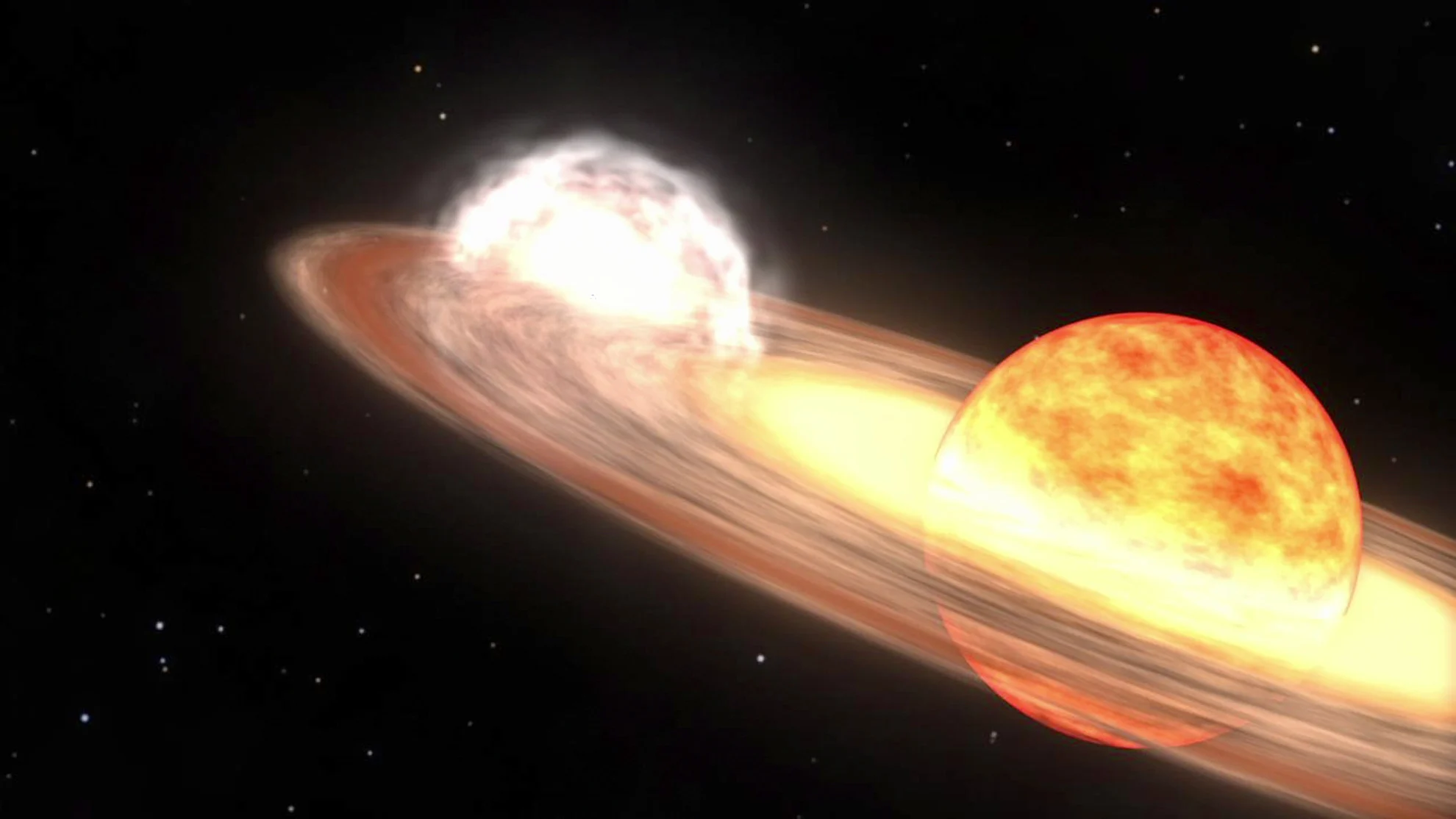
A bright 'new' star may soon appear in the northern sky
Look for this Blaze Star to appear soon and glow as one of the brightest stars in the night sky for roughly a week.
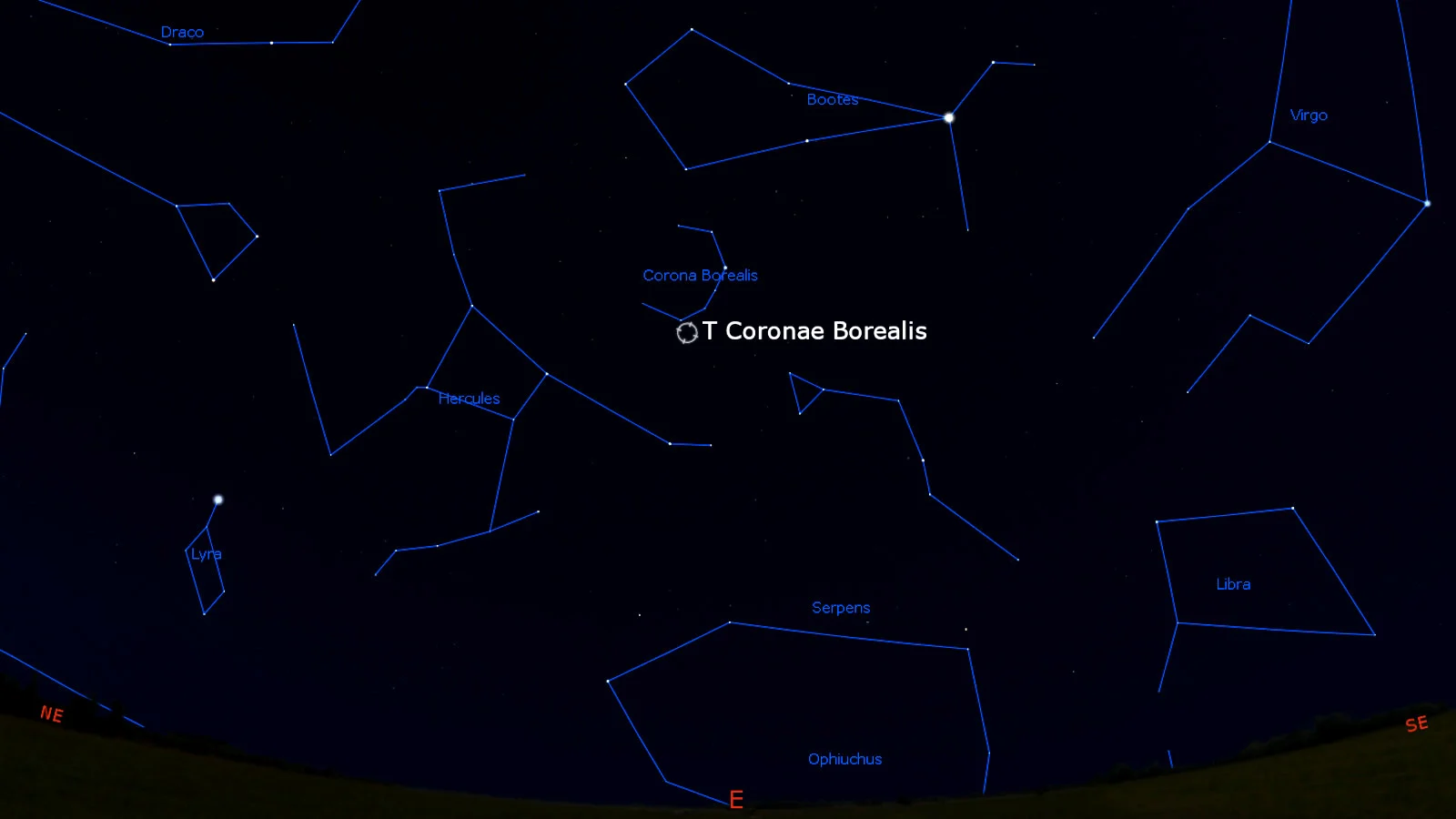
The location of T Coronae Borealis is indicated in this simulated view of the night sky, as shown on March 22, at 1 a.m. local time. Credit: Stellarium/Scott Sutherland
Normally hidden from view in our night sky, astronomers expect a star known as T Coronae Borealis will soon go nova, becoming as bright as the North Star for around a week.
In the northern sky, between Hercules and Boötes, lies the constellation Corona Borealis, also known as the Northern Crown. Quietly lurking within that constellation for the past 80 years or so is a pair of stars — a red giant and a white dwarf — that is normally far too faint to be seen without a telescope.
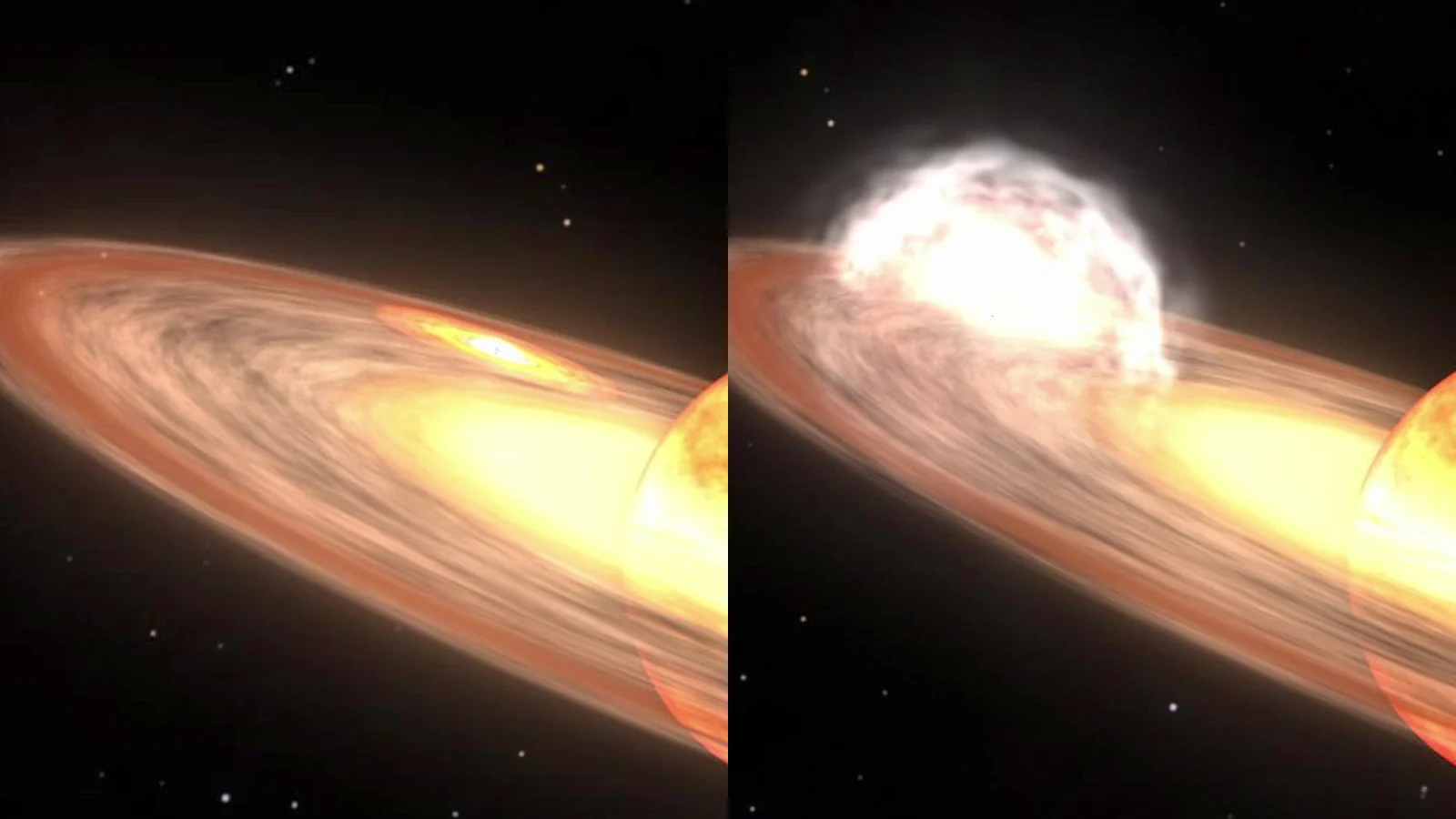
The white dwarf companion of this red giant is quiet (right), but accumulating matter on the remnant's surface eventually causes a bright explosion. Credit: NASA/Conceptual Image Lab/Goddard Space Flight Center
However, in the days or weeks ahead, the smaller of this binary pair is expected to set off an intense explosion, known as a nova, which will cause the pair to suddenly appear in the night as one of the brightest stars that we can see.
According to NASA: "The star system, normally magnitude +10, which is far too dim to see with the unaided eye, will jump to magnitude +2 during the event. This will be of similar brightness to the North Star, Polaris."
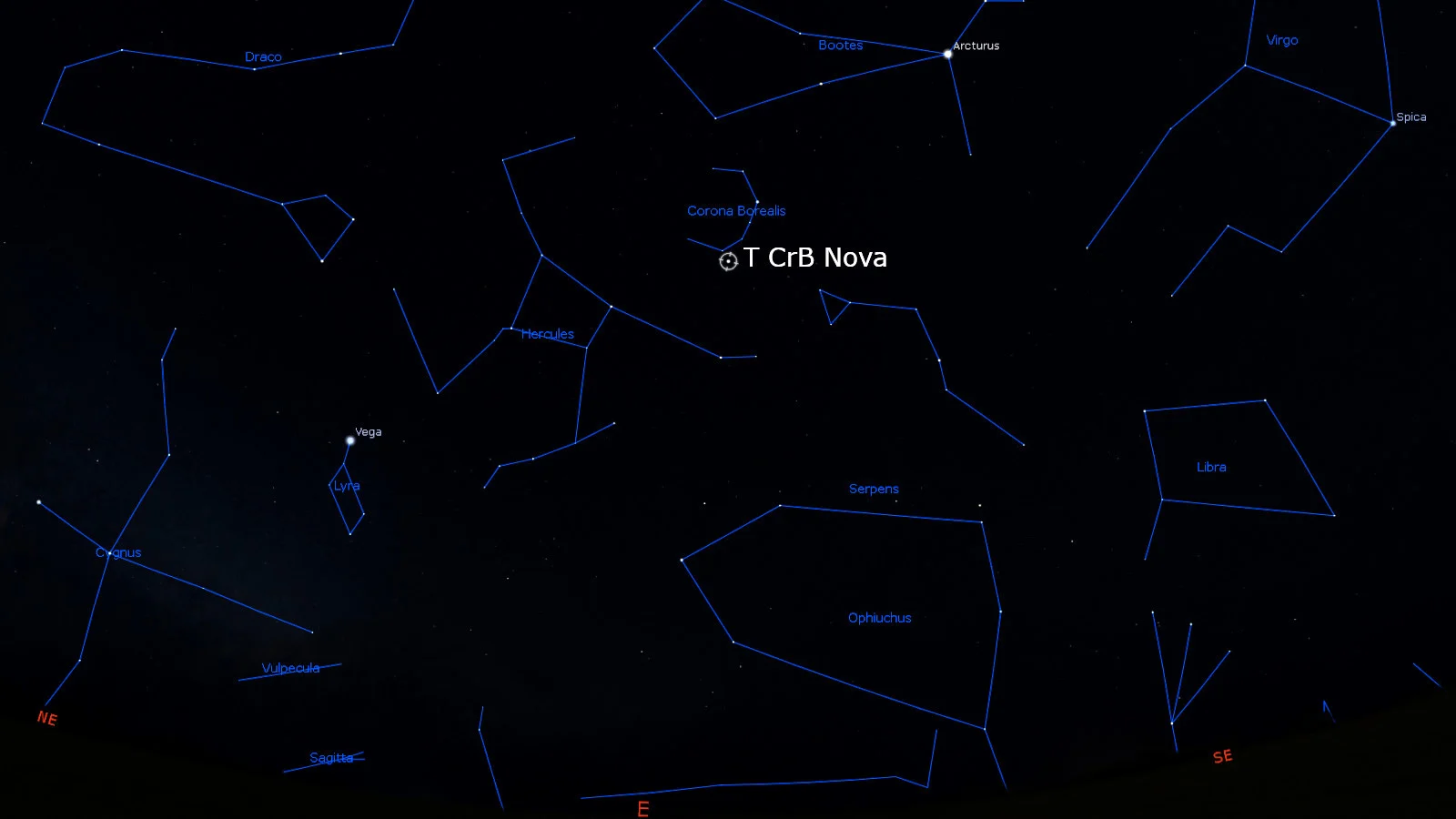
A simulation of what this nova would look like in the sky on March 31, 2024 (if it should appear by then). Credit: Stellarium/Scott Sutherland
"Once its brightness peaks," NASA says, "it should be visible to the unaided eye for several days and just over a week with binoculars before it dims again, possibly for another 80 years."
Astronomers are able to make this prediction because they've seen T Corona Borealis go through this pattern before.
The very first nova documented from the pair was seen in 1866. However, based on older records, it may have been spotted as far back as the year 1217.
The last time T Coronae Borealis had an outburst was in 1946. Prior to that event, astronomers noticed the pair had brightened slightly in 1938, followed by a dimming in 1945.
A similar pattern has been noticed over the past decade. There was an initial brightening of T Coronae Borealis in 2015-2016. The pair then dimmed again just last year, in March or April of 2023.
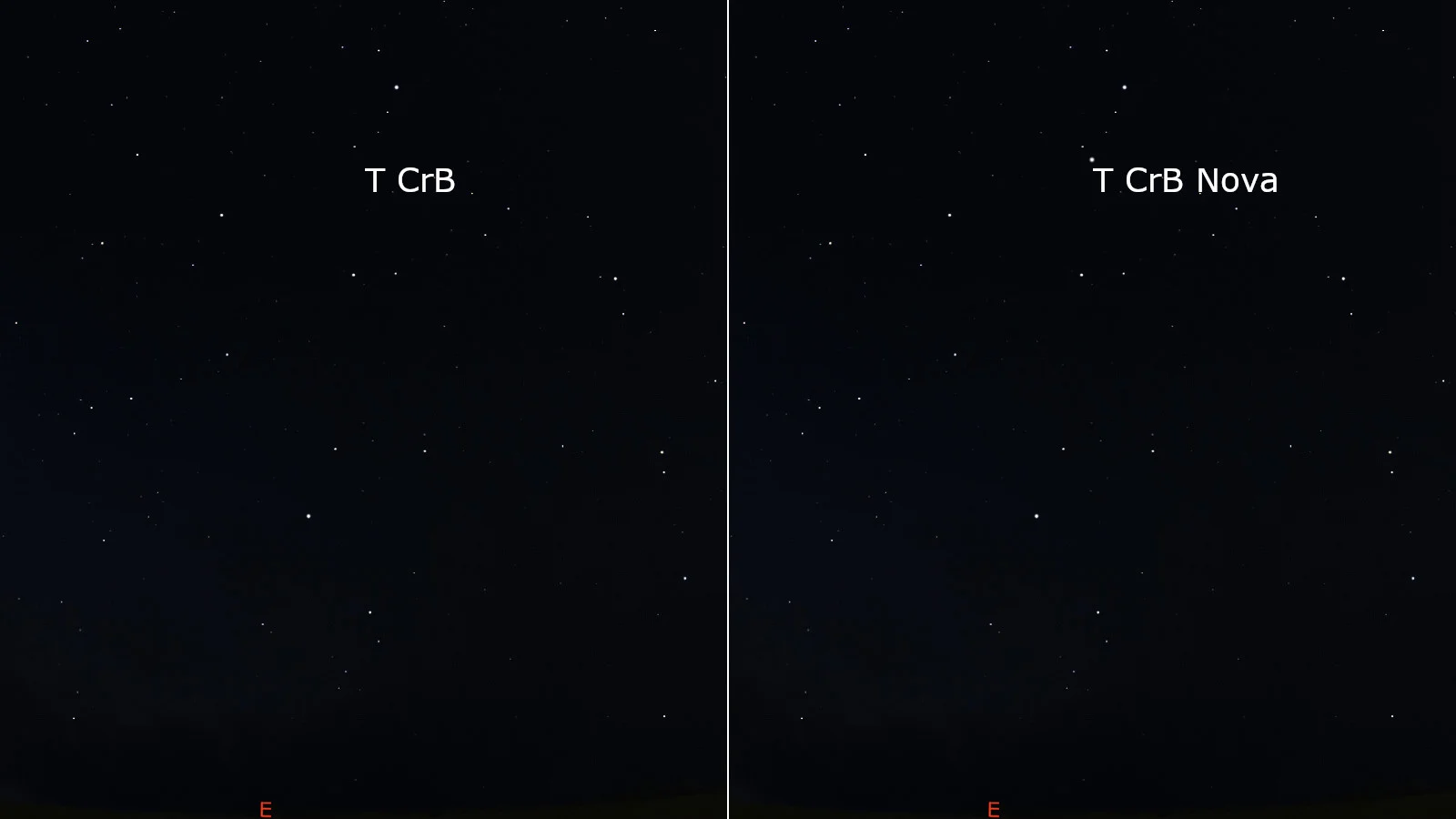
Two views of the eastern night sky, without any constellation markers or labels, showing the difference between T CrB at its normal brightness and after the nova has occurred. Credit: Stellarium/Scott Sutherland
Based on this activity, it is believed that the next T Coronae Borealis nova will occur sometime between March and September of 2024.
Nova vs Supernova
The star system T Corona Borealis, which is located around 3,000 light years from Earth, is a binary pair of stars that orbit around each other. Both stars were probably very similar to our Sun at one time. However, now, one has already reached the end of its lifespan, blowing off its outer layers to become a white dwarf remnant. The other is currently still at the red giant stage of life — still a 'living' star, but fairly close to the end of its own lifespan.
As the white dwarf circles around the red giant, its gravity pulls hydrogen off the larger star, where it accumulates in the atmosphere of the white dwarf over time. When there's enough of it present, the extreme pressure and temperature ignites that hydrogen, causing an explosion that releases as much energy as the Sun produces in 100,000 years. This results in the star flaring extremely bright — up to 10,000 times brighter than normal. At the same time, the explosion causes the layer of hydrogen to be blown off the white dwarf's surface and the stellar remnant is left behind to start this process all over again.
Watch below: NASA presents an artist's conception of what a nova looks like from within the binary star system where it originated.
Remarkably, there is a type of supernova that occurs due to a very similar process. If a white dwarf pulls matter off a companion star at a much faster rate, the stellar remnant gains mass very quickly. This ultimately causes the core of the white dwarf to ignite, rather than just its atmosphere.
This results in the white dwarf completely obliterating itself in an explosion bright enough to outshine an entire galaxy.
Thumbnail image courtesy NASA/Conceptual Image Lab/Goddard Space Flight Center






